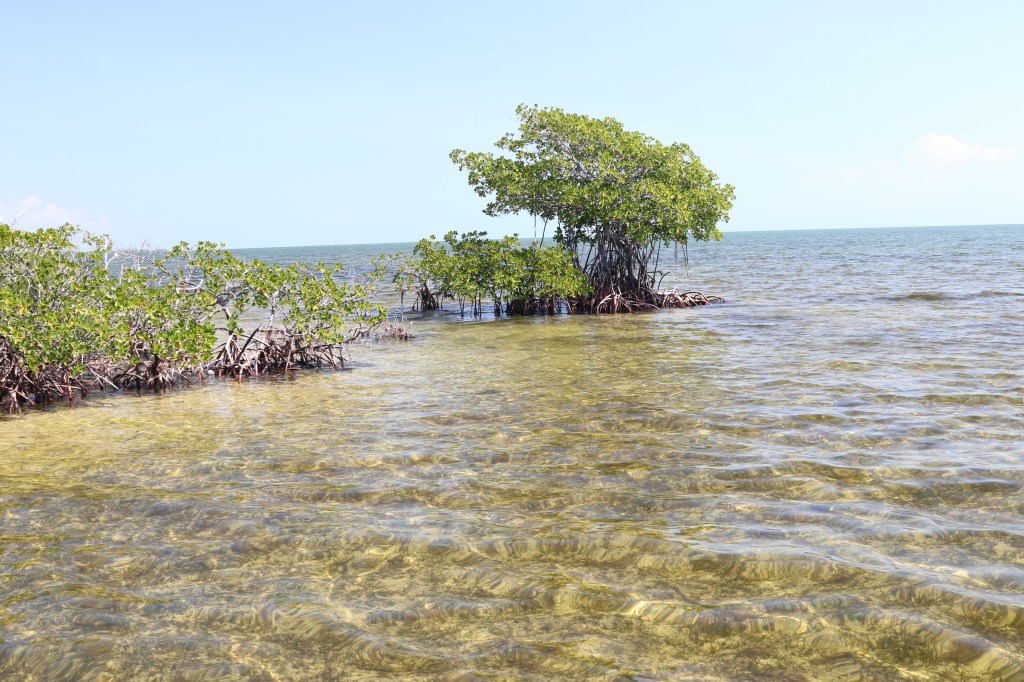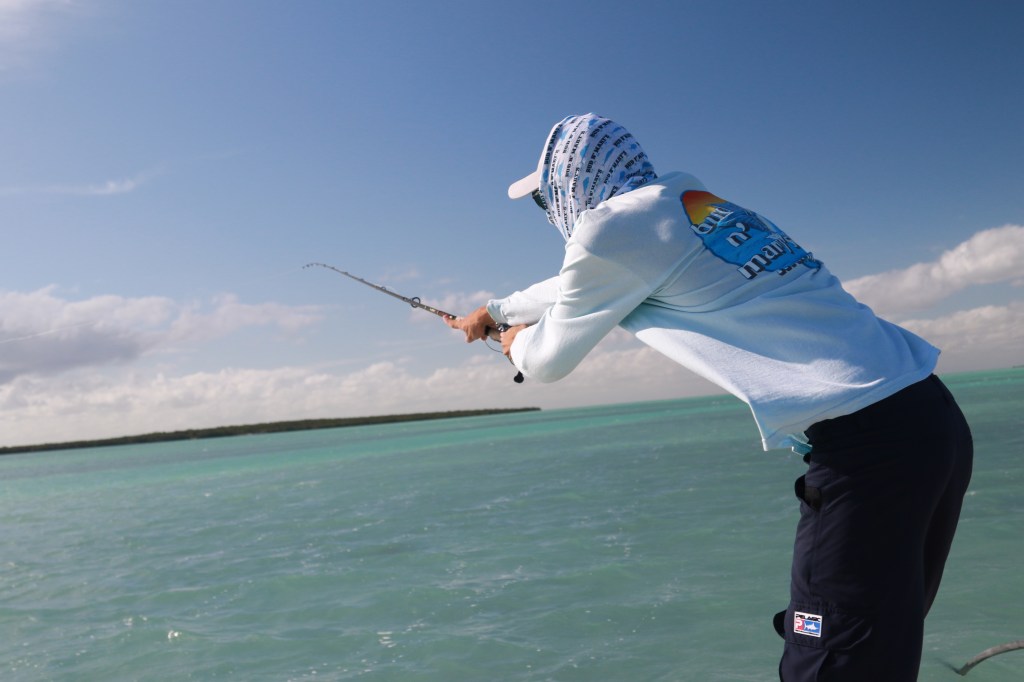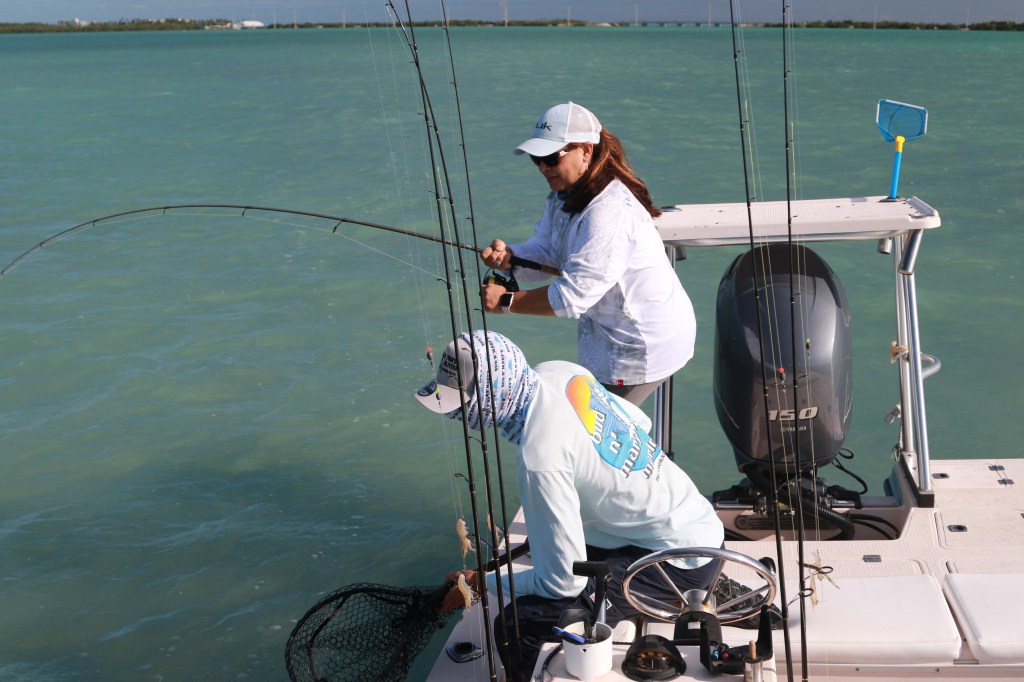
Do you believe in ghosts? Not your typical angling icebreaker, but spend some time on the shallow flats from South Florida to the Bahamas and you may find yourself pondering the possibility of salty specters.
Consider this anecdote from personal experience:
You’re watching a school of fish feeding their way down the edge of a flat, or an island perimeter as you anxiously wait for them to enter your casting range. They’re coming, they’re coming, they’re coming — they’re gone.
Hey, wait a minute. Fish don’t just disappear, right?
Well, if you’re talking about Albula vulpes, the bonefish, sometimes they do. Kinda.
Often called the “gray ghosts,” or “flats phantoms,” bonefish have long presented a challenging appeal based on their uncanny ability to seemingly vanish right before your eyes. Spoiler alert: They don’t actually disappear — they’re just really good at leveraging their body design, along with natural habitat factors to elude observation and slip into deep water escape routes.
With a slender, missile-shaped body wrapped in shimmering mirrored scales, often with faint vertical bars, bonefish use a clever camouflage strategy in which they reflect their surroundings. Add to this the natural distortion of water movement and these fish are masters of elusion.
Survival Strategy: Anglers typically practice catch-and-release, but sharks and dolphins — not so much.
It’s a fair assumption: When you do your feeding in areas where highly efficient predators pose a constant threat, you gotta be good at either avoiding them and/or outrunning them.
So, to define the bonefish appeal, it’s the thrill of the hunt; the quest for fooling an opponent built for stealth and speed.
Not only do bones often pull the now-you-see-us-now-you-don’t routine, they’ll also surprise you by suddenly dashing across your radar. How they approach undetected is their secret and they ain’t tellin’. Stay alert and remain ready for action.
In any case, let’s look at the key details of finding, engaging and capturing one of the sneakiest fish in the sea.

The playing field
Favoring shrimp, crabs, and marine invertebrates, bonefish spend most of their feeding time on shallow flats with a mix of sea grass and sandy patches. This mottled or “broken” bottom holds a bounty of food sources and offers the ideal habitat for sneaky bones to move in and out of cover.
Heavily trafficked flats near major launch ramps hold minimal potential, but those requiring a run and significant push pole time offer bonefish greater seclusion and, therefore, greater comfort. Add proximity to deep water — either navigational channels or tidal cuts — and the appeal skyrockets.
In minimal depths, bones simply scoot along the bottom and feed in a mostly horizontal posture. On fuller tides, the fish often nose down toward the bottom to root out crabs, shrimp, and other treats hiding in the sea grass. As they tilt their backsides upward for balance, the tips of their tails break the surface and offer a clear position indicator.
Also, pay attention to “mudding.” From the continuous bottom ploying created by a school feeding across a particularly silty area, or isolated muddy puffs created by a single fish, the intensity and tidal drift will help you dial in a school’s size and direction.

Rules of engagement
Silence is golden; make that platinum. Bonefish are one of the most wary of flats species and if you spook one, you spook them all.
Flats skiffs with elevated push poling platforms not only allow for quiet propulsion and steering; they also elevate the eyes for longer and broader flats recon. Ideally, the person poling will spot bonefish well before the boat spooks them and relay location and distance direction.
“Okay, 10 o’clock, 30 yards, moving left to right.” Such detail should give an angler on the bow the formula for where to place the bait even before they spot their targets.
Best for Beginners: The other option is dead boat fishing — setting up shop in a promising area, spreading multiple baits around the perimeter and waiting for a pickup. Power Poles or Minn Kota Raptors offer viable options for holding your position. (The traditional Keys method finds the boat facing upcurrent with a push pole driven a 2-3 feet into the bottom at a low angle and roped to a bow cleat.)
Plan on weeding through a few small sharks, catfish, rays and maybe the occasional mutton snapper — all common flats species — but if a school of bonefish sniffs out your baits, expect multiple bites.

Baits and tactics
Bonefish readily gobble light bucktail jigs with flat bottom heads designed to scoot across the bottom like a scurrying crabs, while skilled fly fishermen find success with crab, shrimp, and minnow patterns. Accuracy is key and if you splash too close, it’s game over.
Day in and day out, it’s hard to beat fresh shrimp. Frozen shrimp can work for the dead boat option, as you’re not casting as hard or as far. For sight fishing, once the bait quickly thaws and softens in the seawater, it’s much more likely for fall off the hook — especially on subsequent casts.
The firmness of a fresh shrimp holds the hook much more securely, so pinch off the tail fins to release more scent and create an easy insertion point. Run the hook into the tail section all the way so the eye rests at the very tip. A medium split shot right above the hook eye helps with casting distance.
Use a similar rig for dead boat fishing and scatter bits of freshly cut shrimp around the perimeter to chum up the business.
With either technique, make sure you thoroughly wash your hands after applying sunscreen. These highly pressured fish notice everything — especially the scent of that SPF 50.

3, 2, 1, Blast-off!
When the plan comes together and a bonefish realizes your hook point was not simply a shell fragment or crab pincher poking his mouth, you’ll witness the most blistering run imaginable. It’ll look like the fish was fired from a rocket launcher as zipping line cuts through the water so fast it leaves a standing wake.
Hold the rod high, let the fish make that first big run, then smoothly work the fish to the boat with a smooth cadence of lifting up and reeling down. Bonefish have fleshy mouths, so once they’re hooked well, they rarely come unbuttoned. Take your time and enjoy the show.
Have you camera ready, as these prized fish become easily stressed out of the water. Also, considering the amount of energy a bonefish burns during the fight, your catch will need some time to catch his breath and recharge the batteries.
Hold your bonefish by the tail, support the fish with your other hand under the belly and gently move him back and forth until the fish kicks its tail. Smoothly send the fish forward and get back in position for your next ghost sighting.





